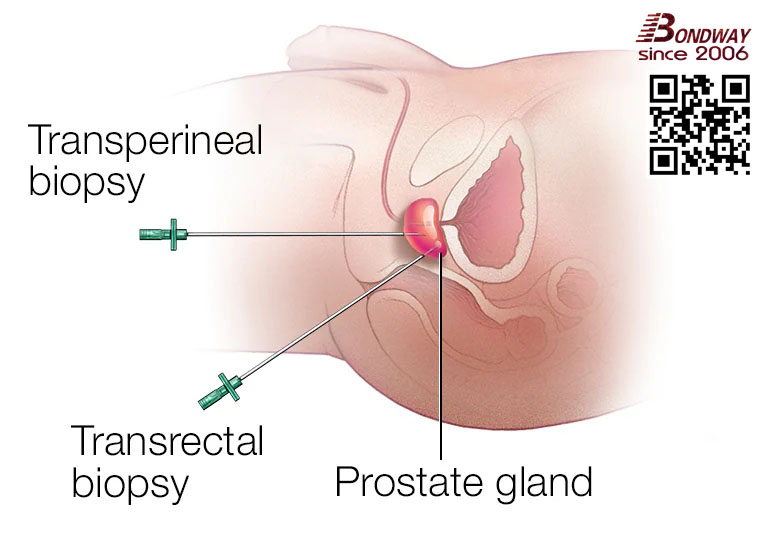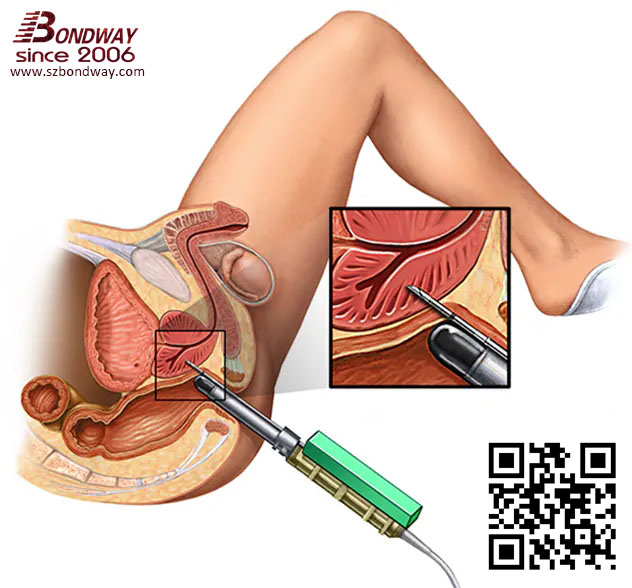Ultrasound-guided transperineal prostate biopsy (reusable biopsy needle guide)
Ultrasound-guided transperineal prostate biopsyMany men ages 55 to 69 are advised to be screened annually or every other year for prostate cancer. Screening may consist of a blood test, prostate-specific antigen (PSA) and digital rectal exam (DRE). If the patient has a confirmed elevated or rising PSA, or an abnormal DRE, the next step is often to proceed with a transrectal ultrasound-guided prostate biopsy.

Transrectal prostate biopsy & Transperineal prostate biopsy
Transrectal approach to prostate biopsy
The overwhelming majority (99%) of prostate biopsies are conducted transrectally. Although this approach has been employed for many years, there are multiple downstream risks. Infections continue to be the greatest risk associated with prostate biopsies; the risk of sepsis, a severe life-threatening infection, is approximately 1 to 2 in 100. In addition, some areas of the prostate, including the anterior prostate, are undersampled with a systematic transrectal approach, which means that some clinically significant prostate cancers may be missed. Both of these problems can be addressed by performing the prostate biopsy via a transperineal approach.

Transrectal prostate biopsy
Overview of ultrasound-guided transperineal prostate biopsies
In transperineal biopsy, the urologist passes the biopsy needle through the perineal skin and into the prostate, rather than passing the biopsy needle through a potentially contaminated rectum. The biopsy needle is still guided by an ultrasound placed in the rectum. This approach lowers the risk of sepsis to 1 in 500, rather than the approximate 1 to 2 in 100 risk of sepsis related to transrectal biopsy.
Transperineal biopsy is appropriate for all patients, but may specifically benefit patients with the following conditions:
History of infection after a previous transrectal biopsy
History of prostatitis
Inflammatory bowel disease
Rectal bleeding complications after previous biopsy
Previous negative transrectal biopsy with suspicion of anterior prostate tumor
The main benefit is safety, due to the lower risk of severe life-threatening infection. Also, with a transperineal approach it is much easier to access the anterior prostate, which is not well sampled with transrectal biopsy.
No rectal bleeding
Different from transrectal biopsy risk, transperineal biopsy risk will not cause rectal bleeding since the needles are not going through the rectal wall.
More transperineal biopsy needle guide (perineal biopsy needle guide) available for you to choose from as below

 English
English
 中文
中文 Français
Français
 Español
Español Pусский
Pусский





副本.png?imageView2/2/w/200/h/150/q/60)


